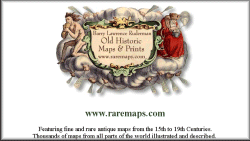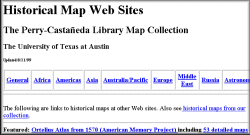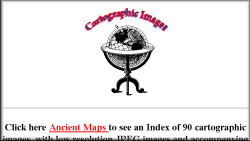

|
| Historical Maps by Blackclove |
(November 98) |
|
Finding old maps to help with accurate city placement and terrain layout. |
| Introduction: Historical Maps | |
|
If you are designing a Civ2 scenario, you'll want to have historical maps on hand to aid in picking the civilizations, setting up borders and especially laying out where cities are. But, where do you go to get these maps? Here, I suggest several sources, ranging from the obvious to the not-so-obvious. The final section includes suggestions for finding historical maps and information on the web, including some really good sites to visit.
|
|
| Historical Maps at the Bookstore | |
|
Your favorite bookstore is
unlikely to have extremely accurate historical maps, but
there are other resources there that may help. Many bookstores
are very nice about letting you paw through their collections,
particularly larger ones like Barnes and Nobles'. Take
advantage of this: Buy yourself a cup of coffee and enjoy it
while you read. I tend to start at the bookstore because
they make better coffee than I do, and have more comfortable
chairs than the university.
|
|
| Using Your Local Library | |
|
Libraries often contain academic
books with less circulation than those sold at major bookstores.
Academic books, including theses and dissertations, are your
best bet for detailed historical maps. They also may include
other bonus data such as information about individuals
who may enrich your scenario, populations, and cultural data.
|
|
| Web Sources for Historical Maps | |
|
OK, you've been waiting for
this part, haven't you? How can you get good historical
maps without getting up from the computer? For recent history,
a good start is to go to your favorite search engine and
look for sites specifically dedicated to the region or
time period in question. There are many such sites available,
a few with moderately good maps. This usually will net
you a lot of interesting historical information, including
some books to look for at the library. But what if this still
doesn't get you a good map?
 Raremaps.com: Although this company is really here to sell old maps (which may be fun if you're a collector), they have digitized many of their maps! The content changes frequently and they have a large collection of hard-to-find maps. Clicking on the thumbnail often brings up a detailed JPEG image that you can then save and use with your favorite paint program. Many of the maps show great detail including individual cities. They are organized by region and by date, and are the actual original maps as drawn by people at that time.  The Perry-Casteñada Library Map Collection: The University of Texas maintains a list of other sites that have old maps. It's a good list. They also have some of their own available for viewing.  Seibold's Maps Project: Jim Seibold has compiled an impressive collection of historical maps. Many of the older maps are currently being hosted by a generous donor, but the maps from 1500-1800 (over 500!) are NOT available! Be generous and host these maps, as they would be a great service to the civ2 community. Plus, it's a worthy project for other reasons.  Westland's Historical Map Collection: A Dutch site with many historical maps available for viewing.  The U.S. Library of Congress Historical Map Collection: Several good historical maps of the USA, including maps showing battles.
|
|
